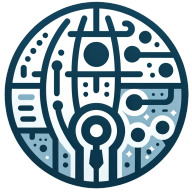3 Effective Ways to Communicate Changes to Employee Benefits
Navigating the complex waters of employee benefits communication just got simpler. This article unveils 3 effective strategies, fortified with expert insights, to ensure that every update reaches the workforce clearly and efficiently. Discover how leveraging digital tools, embracing multi-channel updates, and directing employees to authoritative sources can transform the way benefits information is conveyed.
- Leverage Digital Tools for Benefits Communication
- Implement Year-Round, Multi-Channel Benefits Updates
- Direct Employees to Authoritative Benefit Sources
Leverage Digital Tools for Benefits Communication
Effectively communicating changes or updates to employee benefits requires more than just an email or an updated benefits guide. Employees need clear, engaging, and interactive resources that help them understand their options and make informed decisions. The best approach combines digital apps, benefit decision support tools, and educational videos--going beyond a basic enrollment portal with plan options and pricing.
1. Leverage Digital Decision Support Tools
Many employees struggle with choosing the right plan because they don't fully understand how deductibles, co-pays, or out-of-pocket maximums work. Decision support tools, powered by AI or simple guided questions, can personalize recommendations based on an employee's expected healthcare usage and financial situation. These tools remove confusion and help employees choose benefits that truly fit their needs.
2. Offer a Mobile-Friendly Benefits Hub
Employees expect on-demand access to their benefits information. A centralized, mobile-friendly platform--whether a dedicated benefits app or an employee portal--allows them to review updates, compare plans, and access important documents anytime, anywhere. This ensures that benefits communication isn't limited to annual enrollment meetings.
3. Use Short, Engaging Videos
Complex benefits concepts--like the difference between an HSA and an FSA--can be overwhelming in text form. Short, animated explainer videos break down these topics in a way that's easy to understand. Embedding these videos in emails, benefits portals, and decision-support tools helps employees quickly grasp key differences and make better choices.
4. Implement Multi-Channel Communication
One message isn't enough--employees absorb information differently. A combination of interactive webinars with Q&A sessions, text and email reminders about deadlines and key changes, and social media-style updates on company platforms helps reinforce important updates and ensures employees don't miss critical details.
5. Gather Feedback and Improve
Encourage employees to provide feedback on what communication methods work best for them.
The Bottom Line
Effective benefits communication isn't just about informing--it's about educating and engaging. By integrating digital tools, interactive videos, and multi-channel outreach, companies can ensure employees feel confident in their benefits choices, leading to better participation, smarter decisions, and a more engaged workforce.

Implement Year-Round, Multi-Channel Benefits Updates
The variability I've seen in real-world practices of this topic, across literally 100+ organizations, is frightening. What would constitute "effective communication" is clear, but at some point along the road to getting there, companies veer off course. Here are 2 key elements and where things go wrong. First, the communication should happen throughout the year, and not just during open enrollment. Challenges here are numerous: there often isn't a common location where employees go to consume benefits-related information, other than when it comes time to elect them. Also, HR departments prioritize larger changes, such as entirely new providers or plans, over impactful updates to existing plans. Second, if the changes do happen during open enrollment, or in advance of someone's life event, many companies don't offer some form of corresponding decision support. In other words, it has to be more than just telling employees what happened; it has to be about helping them assimilate and act on those changes.

Direct Employees to Authoritative Benefit Sources
When communicating benefits or changes to existing benefits, it's important to point to the authoritative source. An example of this would be email. When notifying employees of a benefits update via email, it's very tempting to put the benefits change in the body of the email. Instead, it's best to notify everyone that there has been a change, and they should refer to the authoritative source, usually a wiki or employee guide, for the information. This will reduce the potential for error and misunderstandings.


